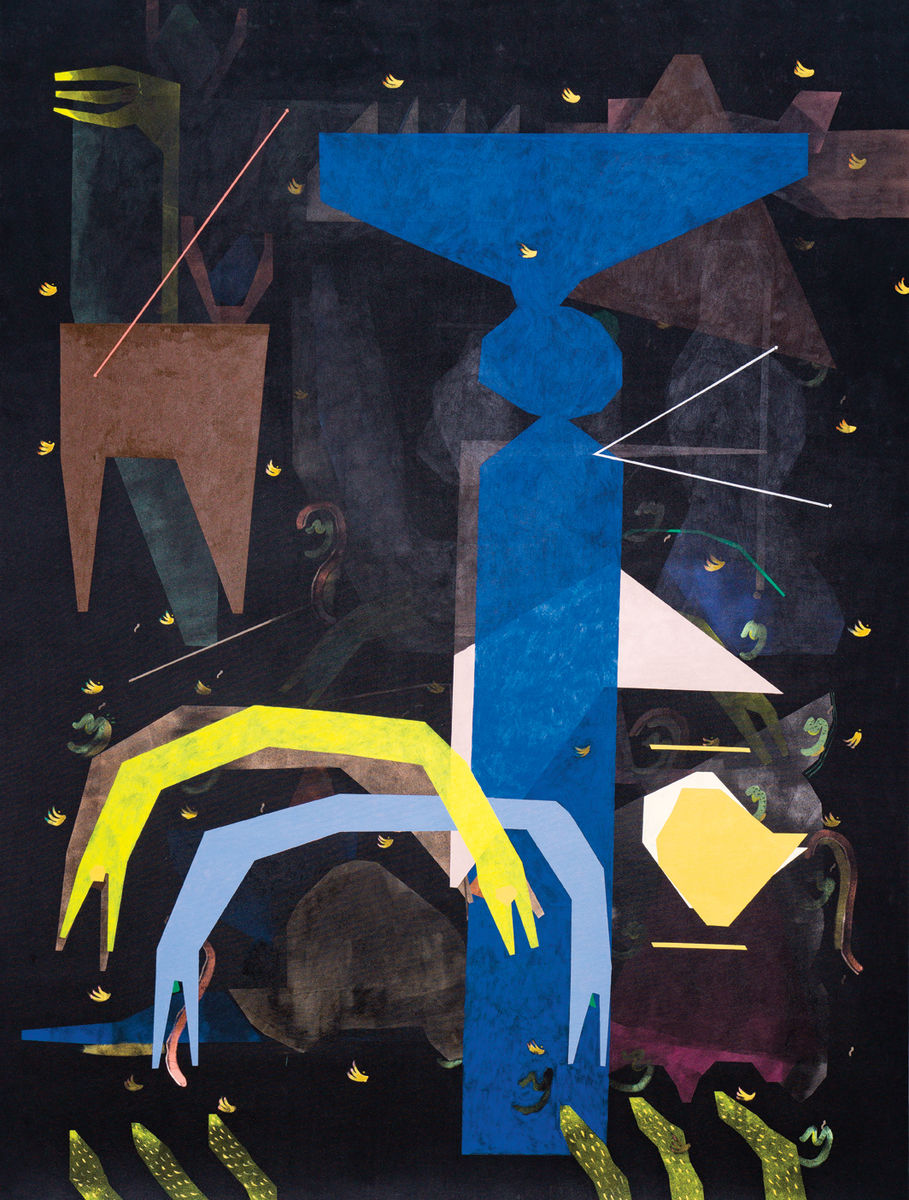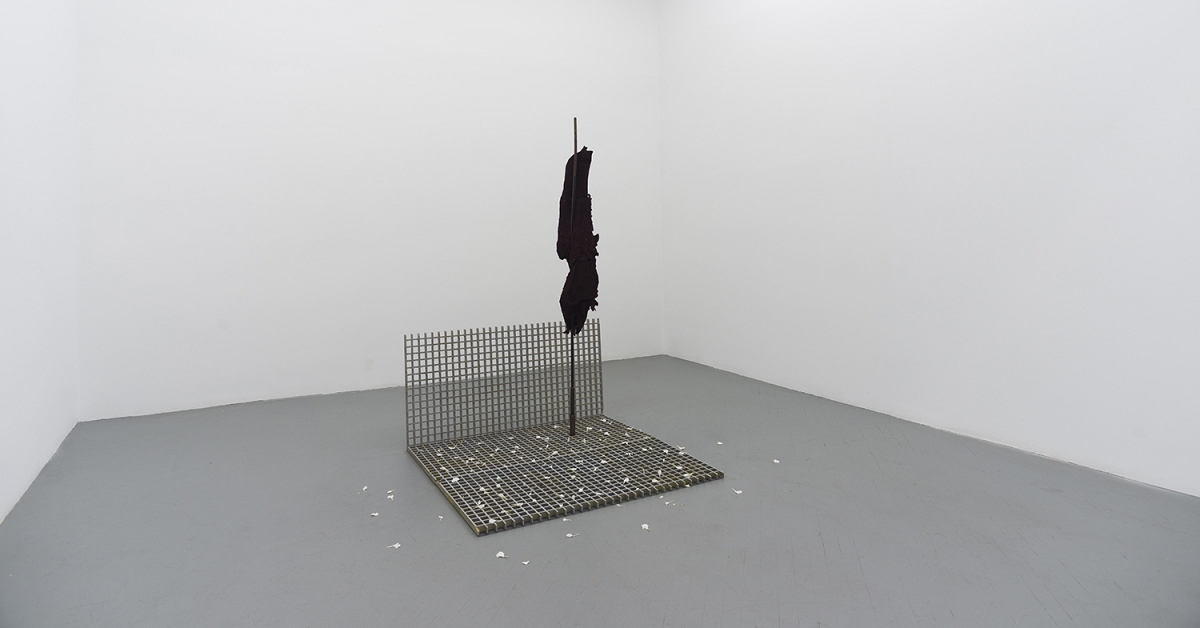Caroline Kent
Artforum / Mar 1, 2021 / by Suzanne Hudson / Go to Original

Caroline Kent, Tower, 2020, acrylic on canvas, 105" × 81”.
Kent mocks up her works by rotating and moving pieces of cut paper, composing her tableaux with scissors before paint. In this, Matisse’s approach is a proximate reference. Her steadfast, elegant arrangements are evidently the consequence of so many trials and possibilities of versioning. Beyond the larger figures that appear in her paintings, Kent also utilizes smaller patterns—such as a delicate zebra print that recalls a moiré pattern—which are frequently localized to the confines of another element. Other designs, however, extend across vaster regions or gather into little swoops and dots that accumulate into swarms. What is wonderfully unclear is whether the more diminutive gestures might key into certain readings of the larger ciphers or whether all the forms exist in some incommensurable relation, making a point about the unintelligibility of meaning even between the closest entities. In Musings on how to leave and re-enter a room, an arrangement of rough-hewn orange triangles might be traffic cones or symbols of skirted bodies following one another in a procession.
Language, or maybe communication, is everywhere, framed by the equally occult captioning of Kent’s titles: What the stars can’t tell us, for instance, is a cryptic scene inhabited by vertical, letterform-like staffs, while Tower gives us a tall, midnight-blue chalice that is also a beacon—Babel?—before which curvy forked-tongued beings (or topsy-turvy U’s) descend. If abstraction not so very long ago held forth the promise of universalism (always a kind of Esperanto predicated on the whitewashing of non-European precedents and the fundamental reality of difference), Kent’s vision of ideographic confusion offers a different epistemic ground. Even under the ambient light of the shrill California winter sun, Kent’s crisply rendered images remain impervious, despite their myriad deeply modernist referents—including the voracious art and architecture of Pedro Coronel and Luis Barragán, respectively, as well as Alma Thomas’s joyous and polychromatic abstract paintings. Each piece reveals details of the visual field as if illuminated by strobe or through some inherent animating principle of biofluorescence. They are nocturnes in genre and intention, sharing only glimpses that reiterate the conditions of their nascent visibility.






